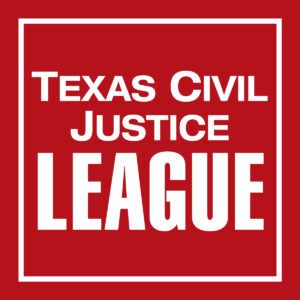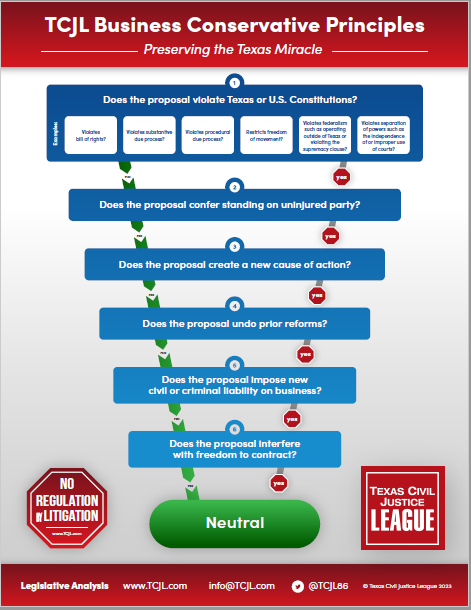 In a case from the San Antonio Court of Appeals with significant negative consequences for property owners and general contractors, TCJL has filed an amicus brief urging the Texas Supreme Court to grant review and reverse the court of appeals.
In a case from the San Antonio Court of Appeals with significant negative consequences for property owners and general contractors, TCJL has filed an amicus brief urging the Texas Supreme Court to grant review and reverse the court of appeals.
JMI Contractors, LLC v. Jose Manuel Medellin (No. 24-0846) arose from an injury accident at a construction site. JMI, a restoration and renovation company, retained Hernandez, an independent roofing specialist, to do the roofing work on an apartment project. Hernandez brought in another independent contractor, Medellin, whom he had worked with in the past, to assist in performing the work. While working on the flat roof, Medellin, while rolling out a sheet of material for a waterproof seal, stepped backward and fell off the roof. He sued JMI for negligence, gross negligence, and premises liability. A jury awarded more than $4.6 million in damages, including $1.3 million in mental anguish damages and $1 million in punitive damages. JMI appealed.
Initially, the court of appeals determined that the trial court had committed harmful error by excluding evidence of Medellin’s alcohol and marihuana use on the morning of the accident. Medellin moved for rehearing, for the first time arguing that the evidence was cumulative and, consequently, the trial court did not err in excluding it. This apparently did the trick, because the court granted rehearing, withdrew its opinion, and issued a new one that, among other things, applied, for the first time ever in Texas law, the necessary-use exception to an independent contractor. The well-established rule is that a property owner owes an invitee a duty to make safe or warn against any concealed, unreasonably dangerous conditions of which the owner is, or reasonably should be, aware but the invitee is not. Additionally, if the danger is open and obvious, the owner owes no duty at all. In this case, it’s hard to see how the edge of a flat roof cannot be anything but open and obvious.
Yes a slim 2-1 majority of the court of appeals apparently decided it didn’t want to apply settled law. Instead, it applied the necessary-use exception, under which an owner may be held liable if, “despite [the invitee’s] awareness of the risks, it is necessary that the invitee use the dangerous premises and the landowner should have anticipated that the invitee is unable to take measures to avoid the risk.” The problem is, the Texas Supreme Court has never applied the exception to an independent contractor, and in fact has expressed doubt as to whether it should even apply in that context. This didn’t stop the majority, which got around that problem by ignoring the question altogether. Instead, it decided that Medellin established the elements of the exception. Thus the majority got its cake and ate it, too. Put another way, it clearly wanted to get to that result, no matter how.
Chief Justice Martinez wrote a sharp dissent in which she took the court to task for its about-face on the exclusion of the damaging evidence. She pointed out that, on rehearing, the court both allowed plaintiff to make a new argument about the evidence that it hadn’t made before and simply assumed that keep it from the jury wasn’t harmful to JMI. This was patently erroneous, Chief Justice Martinez opined, because the evidence went directly to the question of JMI’s proportional responsibility once the majority decided JMI owed a duty to plaintiff. There was another issue in the case that we thought particularly troubling as well. In plaintiff’s counsel’s jury argument on punitive damages, he urged the jury “just to write in a big number.” Excuse us?
In any event, JMI is seeking review, and our brief urges SCOTX to grant it. We take up three issues. First, we address the fact that SCOTX has never applied the necessary-exception to an independent contractor and has wondered out loud of whether it ever should. If we are going to expand the duties of property owners and general contractors that much, we argue, SCOTX needs to say that, not an intermediate court of appeals on its own motion. But, we add, if the Court doesn’t want to reach that issue in this case, it could send the case back for a new trial on harmful error (the exclusion of evidence of plaintiff’s alcohol and marihuana use immediately before the accident) or incurable jury argument (“just write in a big number”). As you know, the plurality in Gregory v. Chohan made it clear that plaintiff’s lawyers couldn’t simply “pull numbers out of a hat” with respect to noneconomic damages, and they shouldn’t be able to do with respect to punitive damages, either.
You can read our brief below.
